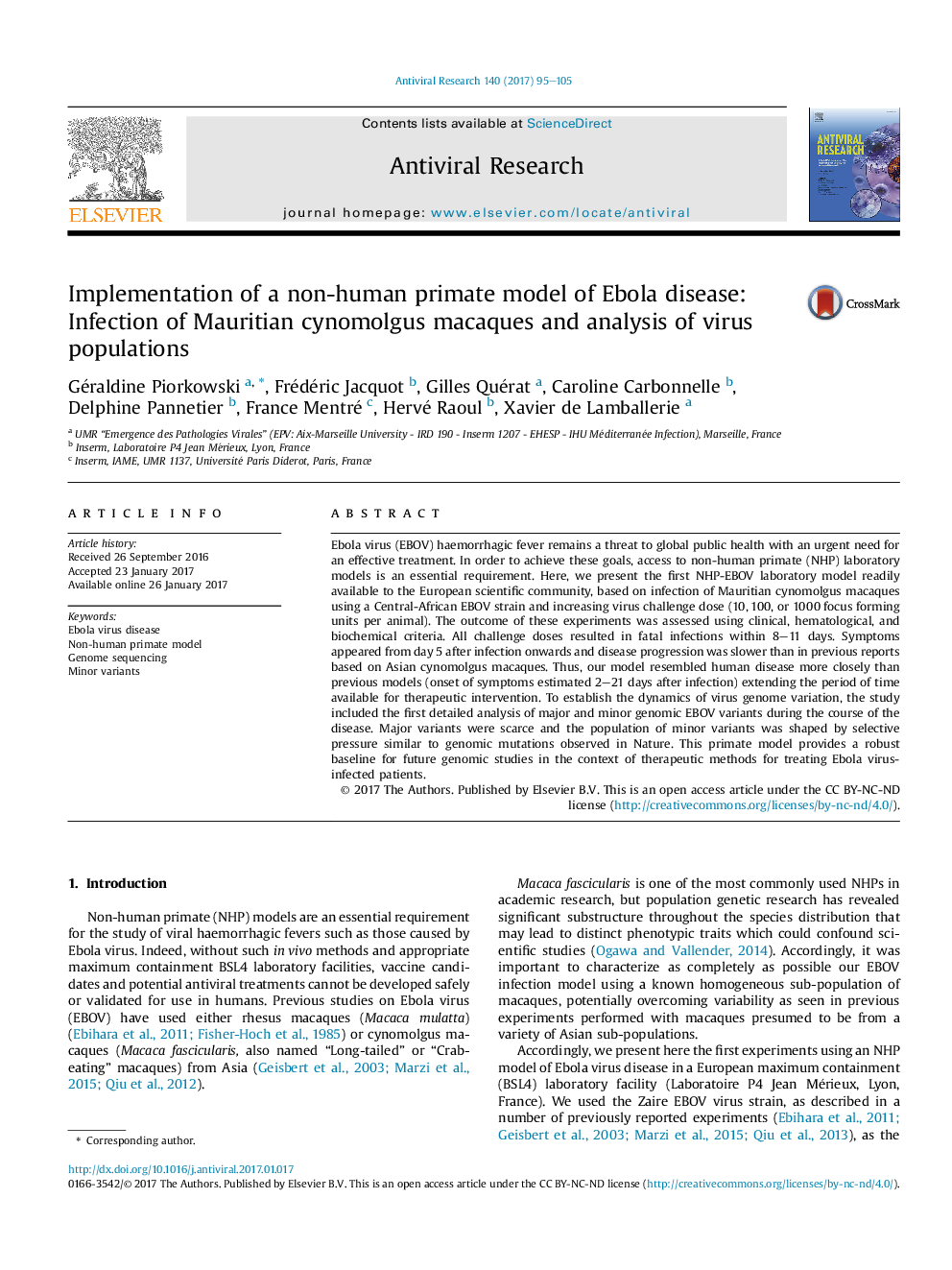| کد مقاله | کد نشریه | سال انتشار | مقاله انگلیسی | نسخه تمام متن |
|---|---|---|---|---|
| 5551828 | 1557803 | 2017 | 11 صفحه PDF | دانلود رایگان |
- Using Mauritian cynomolgus monkeys and a range of virus challenge doses, we have developed a non-human primate model.
- This model closely resembles the clinical picture recorded for humans infected with Ebola virus.
- High-throughput sequencing of Ebola virus (EBOV) was performed on infected monkey sera during the entire disease course.
- The dynamics of virus genome variation were studied through a detailed analysis of consensus and minor genomic variants.
- We provide a robust model for future studies in the context of therapeutic methods for treating EBOV infected patients.
Ebola virus (EBOV) haemorrhagic fever remains a threat to global public health with an urgent need for an effective treatment. In order to achieve these goals, access to non-human primate (NHP) laboratory models is an essential requirement. Here, we present the first NHP-EBOV laboratory model readily available to the European scientific community, based on infection of Mauritian cynomolgus macaques using a Central-African EBOV strain and increasing virus challenge dose (10, 100, or 1000 focus forming units per animal). The outcome of these experiments was assessed using clinical, hematological, and biochemical criteria. All challenge doses resulted in fatal infections within 8-11 days. Symptoms appeared from day 5 after infection onwards and disease progression was slower than in previous reports based on Asian cynomolgus macaques. Thus, our model resembled human disease more closely than previous models (onset of symptoms estimated 2-21 days after infection) extending the period of time available for therapeutic intervention. To establish the dynamics of virus genome variation, the study included the first detailed analysis of major and minor genomic EBOV variants during the course of the disease. Major variants were scarce and the population of minor variants was shaped by selective pressure similar to genomic mutations observed in Nature. This primate model provides a robust baseline for future genomic studies in the context of therapeutic methods for treating Ebola virus-infected patients.
Journal: Antiviral Research - Volume 140, April 2017, Pages 95-105
